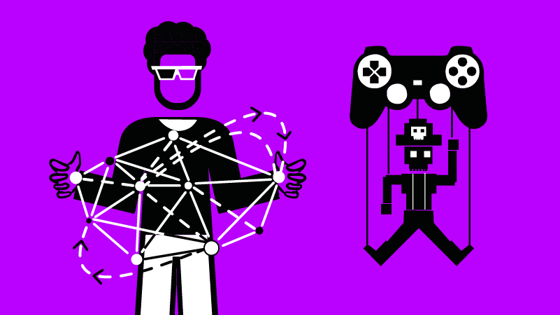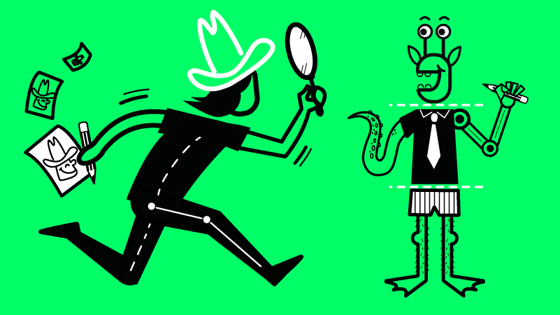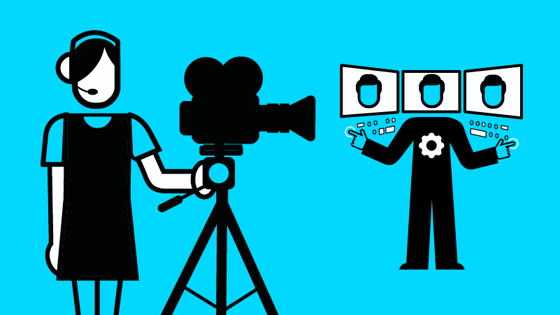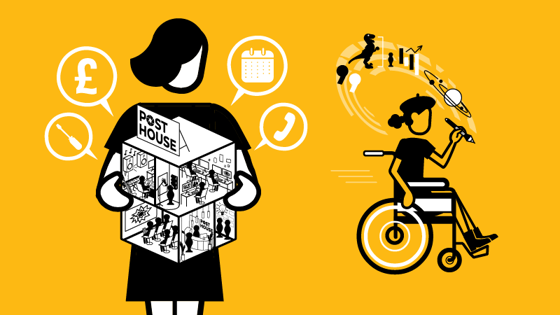Film and TV drama
Editor (Film and TV Drama)
Also known as: Picture editor
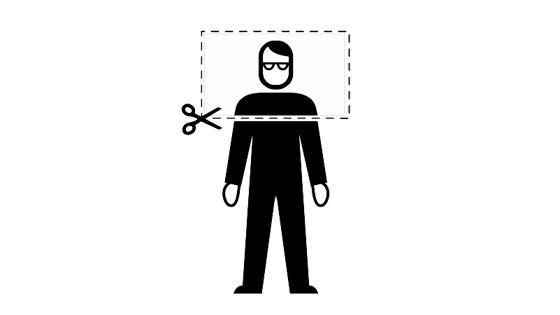
What does an editor do?
The editor puts together (cuts) the pictures (rushes) as they come in from the set (or lab, if the drama is being shot in celluloid). Films tend not to be shot in the order in which the story unfolds, so editors might be working on scenes from the end of the film before the beginning. Their job is to take scenes in non-story order and edit them bit-by-bit into a whole.
In pre-production, editors work closely with the director to decide how to make the most of the script. Once filming starts, they look at the rushes each day, checking technical standards and the emerging sense of story and performance and editing it into a series of scenes. By the time the film wraps editors will have spent hours reworking scenes and cutting them together to create a rough assembly.
During post-production, the editor and director will work closely to refine the assembly edit into a director’s cut, which must be approved by producers, until they achieve picture lock (known as final cut). After that, the music and sound are added to the mix, a process that editors will oversee.
The editor role is featured in ScreenSkills' new immersive film First Day: In post.
Read and watch
What’s an editor good at?
- Storytelling: understand how to use pictures, rhythm, pace and tension to tell a tale
- Visual awareness: have a good eye, know what look fits the style of the film
- Using edit software: be adept with tools like Avid Media Composer, Adobe Premier, Final Cut and Lightworks
- Communication: work well with the director, and share the process with the edit assistants and the script supervisor
- Attention to detail: be patient, show attention to detail and good organisational skills, often under pressure
Who does an editor work with?
First assistant editor
Assistant editors take charge of the day-to-day running of the cutting room, leaving the editor free to concentrate on editing the film. Their primary task is to communicate with other departments, like production, camera and sound. They check camera sheets when the rushes arrive and note any technical problems. Sometimes the editor asks the first assistant to do an assembly cut.
Second assistant editor, third assistant editor and edit assistants
First assistant editors might be helped by several assistants, depending on the size of the production. The assistants label files and do simple cutting, editing and sound syncing. They read oscilloscopes and audio meters, TV and video signals, are familiar with technical specifications for different broadcasters and understand compression.
Supervising sound editor
Supervising sound editors are responsible for all sound post-production. They are the picture editor’s main point of contact for everything concerning the production soundtracks. See separate profile: supervising sound editor
Dialogue/ADR editor
The dialogue/ADR editors have a close working relationship with the picture editors due to script changes and replacement dialogue with the actors.
Colourist
Colourists contribute to the mood and look of a film by defining its colours. They work with the director and director of photography to decide the palette. See separate profile: colourist
Visual effects (VFX) supervisor
See separate industry: VFX
Post-production runner
Runners keep the edit suites tidy, make tea and arrange meals. They sometimes work on reception, answering the phone and making clients and guests feel welcome. See separate profile: post-production runner
How do I become an editor?
The traditional route to becoming an editor is to start as a post-production runner or trainee and go on to become an assistant editor. See the post-production runner job profile for details. It’s common to work as an assistant editor in lower budget productions before moving into feature films.
At school or college:
If you want to go to university, A-levels or Highers in art and design, photography, drama and theatre, English, film studies, graphic design, graphic communication, media studies, physics, psychology or computing science are useful. Or you might want to take the following Level 3 vocational qualifications:
- NCFE Level 3 Applied General Certificate in Art and Design
- BTEC National Diploma/Extended Diploma in Art and Design
- BTEC National Extended Diploma in Creative Digital Media Production
- UAL Applied General Diploma/Extended Diploma in Art and Design
If you want to go straight into a job or apprenticeship, the following Level 3 vocational qualifications will equip you:
- Aim Awards Diploma in Creative and Digital Media
- OCR Cambridge Technical Diploma in Art and Design (3D Design)
- OCR Cambridge Technical Diploma in Art and Design (Graphic Design)
- OCR Cambridge Technical Diploma in Art and Design (Photography)
- OCR Technical Diploma in Digital Media (Moving Image and Audio Production)
- BTEC National Diploma in Film and Television Production
- BTEC National Diploma in Film and Television Visual Effects
- BTEC National Diploma in Photography
- UAL Diploma/Extended Diploma in Art and Design
- UAL Diploma/Extended Diploma in Creative Media Production and Technology
Get an apprenticeship:
Apprenticeships are jobs with training, so they’re a great opportunity to earn while you learn. You might find studios offering the following apprenticeships:
- Post production technical operator (Level 4, England)
- Creative and Digital Media (Level 3, Northern Ireland)
- Creative and Digital Media (Level 3, Wales)
- Creative (SCQF Level 6/7, Scotland)
- Creative and Digital Media (SCQF Level 6/7, Scotland)
Before taking any apprenticeship, check what you’ll be learning with your prospective employer and college, so you can be sure it will be giving you the skills you want. Go to how to become an apprentice to learn how to find apprenticeships in your region or approach companies directly.
Edit:
Make videos. Set up a YouTube channel showing off your work. Go to Build a portfolio to learn how.
Get a degree:
It isn’t essential, but if you want one, have a look at ScreenSkills’ list of recommended courses in film and TV. We recognise courses with our ScreenSkills Select award where they offer training in the relevant software, dedicated time to building a portfolio and have strong links with the film and TV industries.
Take a short course:
National Film and Television School (NFTS) offers short courses for all grades, and there are some postgraduate courses available. Go to the list of training courses recommended by ScreenSkills and see if there is one in editing.
Network:
Got to ScreenSkills’ events like Open Doors to meet people working in art departments. Show them your portfolio and give them your number.
Network online:
Create a LinkedIn profile. See if there’s a Facebook page or other social media group for people making films or videos in your area. Join it. Create a ScreenSkills profile.
Look for post-production companies:
Most are in London, but not all. Sign up to Production Base to learn who is making what. Contact them and look out for editor jobs.
Become a trainee:
Apply for ScreenSkills’ Trainee Finder scheme as a post-production trainee.
You might also be interested in...
Being an editor for music videos. Alternatively, you could consider being a series director or an edit producer in the unscripted TV industry.


